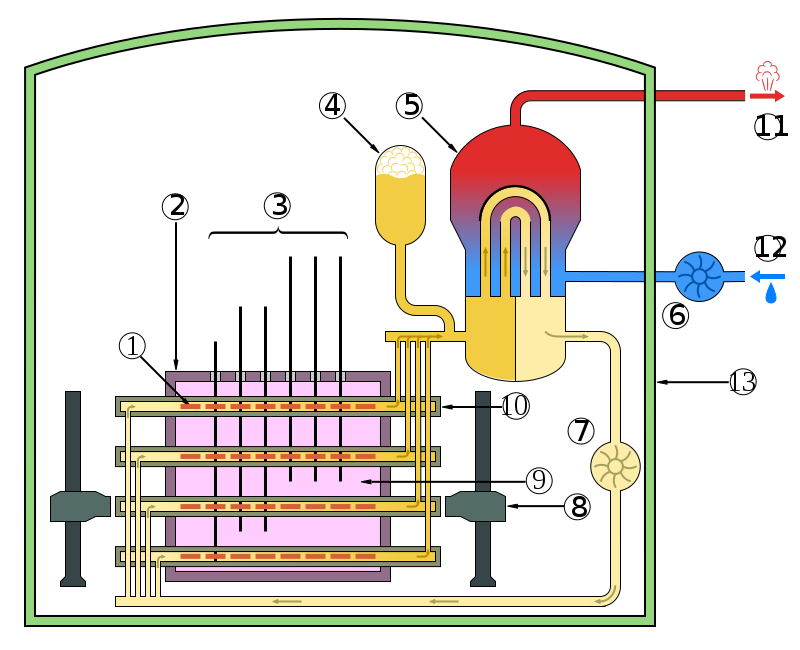Nuclear Reactors 423 - New Canada University Research Post For Candu Reactors
The Candu reactor design originated in Canada. It utilizes pressurized heavy water and natural uranium ore. The name is derived from "Canada" and "deuterium" which refers to the heavy water. The design was developed in the 1950s and 1960s by a consortium of companies led by Atomic Energy of Canada Limited (AECL). In 2011, the Canadian Government transferred the license for the Candu design along with the reactor development and marketing division of AECL to a new company called Candu Energy which is a wholly owned subsidiary of SNC/Lavalin.
All reactors constructed in Canada are based on the Candu design. As well as providing electrical generation for Canadian communities, Candu reactors have been sold to other countries including in India, Pakistan, Argentina, South Korea, Romania, and China.
In a Candu reactor, the reactor core contains natural unenriched uranium which is more cost effective that the use of enriched uranium fuel. The high temperature, high pressure deuterium circulating around the core has what is called a high neutron economy which eliminates the need for enriched fuel. Instead of using a pressure vessel like those used in most other popular reactor designs, the Candu design contains around four hundred pressure tubes about four inches in diameter which hold the fuel. This innovation allows refueling without the need to shut down the reactor as well as other benefits. Pressure tubes are opened at one end and new fuel is shoved in while the old fuel is pushed out the other end.
Candu reactors are unique and they have unique maintenance requirements during their lifetimes. Candu reactors were originally designed to last thirty years but that standard lifespan is now being extended and many questions need to be answered about such extension.
A nuclear scientist named Peter Tremaine who researches the chemistry of the water in the high pressure/high temperature condition of Candu reactors at University of Guelph has just been named the Natural Sciences and Engineering Research Council of Canada (NSERC)/ University Network of Excellence in Nuclear Engineering (UNENE) Senior Industrial Research Chair in High-Temperature Aqueous Chemistry. The NSERC is providing almost a million dollars of funding for the position. Another million dollars is being provided by the Canadian nuclear industry. There are also several Canadian universities participating.
After he was given the new position, Tremaine pointed out that a lot of the nuclear scientists in Canada got their start during the period when the Candu reactor design was being developed. Many of them are retiring and he said that it was critical for Canada to capture and preserve their nuclear expertise.
Tremaine said that "the Industrial Research Chair position will contribute to the education of graduate students, post-doctoral personnel, and research managers in industry. It will bring industrial scientists and research engineers together with those students to advance knowledge and solve problems. Research projects that address important industry challenges will be a priority. The advances in the science should have a major impact on the nuclear industry."
Schematic diagram of a CANDU reactor:
1. Fuel bundle
2. Calandria (reactor core)
3. Adjuster rods
4. Heavy water pressure reservoir
5. Steam generator
6. Light water pump
7. Heavy water pump
8. Fueling machines
9. Heavy water moderator
10. Pressure tube
11. Steam going to steam turbine
12. Cold water returning from turbine
13. Containment building made of reinforced concrete
